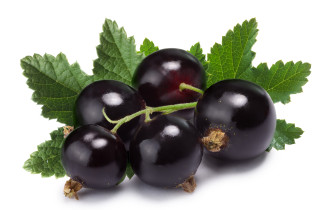ABSTRACT
Crown rot disease is one of the limiting factors in strawberry (Fragaria × ananassa) production. It is caused by Phytopthora cactorum, a hemibiotrophic pathogen that destroys strawberries by rotting the crown tissues. Infected plants get wilted or remain stunted, thereby resulting substantial yield losses and destruction in the strawberry fields. Better understanding of strawberry – P. cactorum interaction could help in resistance breeding and development of new control measures against crown rot. In this work, transcriptomics and metabolomics approaches were taken to screen for potential determinants related to crown rot resistance and P. cactorum virulence.
Woodland strawberry, Fragaria vesca (accession Hawaii4, clone H4.4) was used as a host plant in the transcriptome analysis, because it is quite resistant against P. cactorum. Plant roots were challenged with zoospores and the transcriptomes of inoculated and uninoculated roots were compared 48 hours after treatment. This revealed massive changes in F. vesca transcriptome. Cell wall synthesis along with auxin and brassinosteroid biosynthesis genes were downregulated, whereas genes involved in salicylic acid, jasmonic acid, and ethylene signalling were upregulated, indicating growth repression and activation of defence responses. Terpenoid and flavonoid pathway genes were elicited together with major allergens belonging to PR-10 family suggesting central roles in defence. The most interesting up-regulated genes were pattern-recognition receptors located within RPc-1 (Resistance to P. cactorum 1) locus that may be responsible for P. cactorum perception.
The transcriptomes of two P. cactorum isolates were compared in interaction with F. vesca roots, to search for potential effectors contributing to virulence differences. The gene that was most significantly more highly expressed in crown rot-causing Pc407 isolate, encoded a protein containing GAF and FYVE-like domains and may be involved in membrane trafficking. Lipid catabolism seemed to be more active in Pc407 and several elicitins (i.e. sterol-carrier proteins) and carbohydrate-active enzymes belonging to glycoside hydrolase family 1 were more highly expressed in this isolate. In low-virulent Pc440, pectin-degrading enzymes showed higher expression. The RXLR effector set more highly expressed in Pc440 comprised 68 genes, whereas 22 RXLRs were more highly expressed in Pc407. Thus, it seems that Pc407 relays on smaller set of key RXLRs to infect strawberries. The most interesting effector for functional studies is an RXLR, that was highly expressed, exclusively in Pc407 isolate throughout the infection.
Metabolite profiles of F. vesca and F. × ananassa were analysed to reveal the changes in crown tissue upon interaction with Pc407 and Pc440 isolates. Of differentially accumulated metabolites, 51 were tentatively identified. Lysophospholipids and free fatty acids, were highly accumulated in F. × ananassa after inoculation with high-virulent Pc407 isolate. These compounds are generated by phospholipase A enzymes and they may be involved pathogenesis process of crown rot disease by promoting cell death. Several triterpenoids were upregulated in inoculated plants, and some of them showed distinct accumulation patterns in different interactions. According to previous studies, triterpenoids could repress or stimulate P. cactorum growth; they might also serve as immunomodulators by regulating the activity of phospholipase A enzymes. Hence, triterpenoids may have an important impact on the outcome of interaction.
In conclusion, this work has provided new insights into Fragaria - P. cactorum pathosystem at molecular level. As described above, transcriptome analyses pointed out interesting genes that may contribute to the crown rot resistance of F. vesca and the virulence differences of P. cactorum. These genes are good candidates for functional studies. At metabolite level, biological activities of triterpenoids and lysophospholipids deserve further characterization. Together these findings serve as an important steppingstone toward profound understanding of crown rot resistance mechanisms and P. cactorum virulence strategies.
The doctoral dissertation of MSc Anna Toljamo, entitled Fragaria – Phytophthora cactorum interactions. Insights into the transcriptomes and metabolite profiles will be examined at the Faculty of Science and Forestry on the 17th of December online. The opponent in the public examination will be Professor Laura Jaakola, UiT, and the custos will be Professor Emerita Sirpa Kärenlampi, University of Eastern Finland. The public examination will be held in Finnish.


